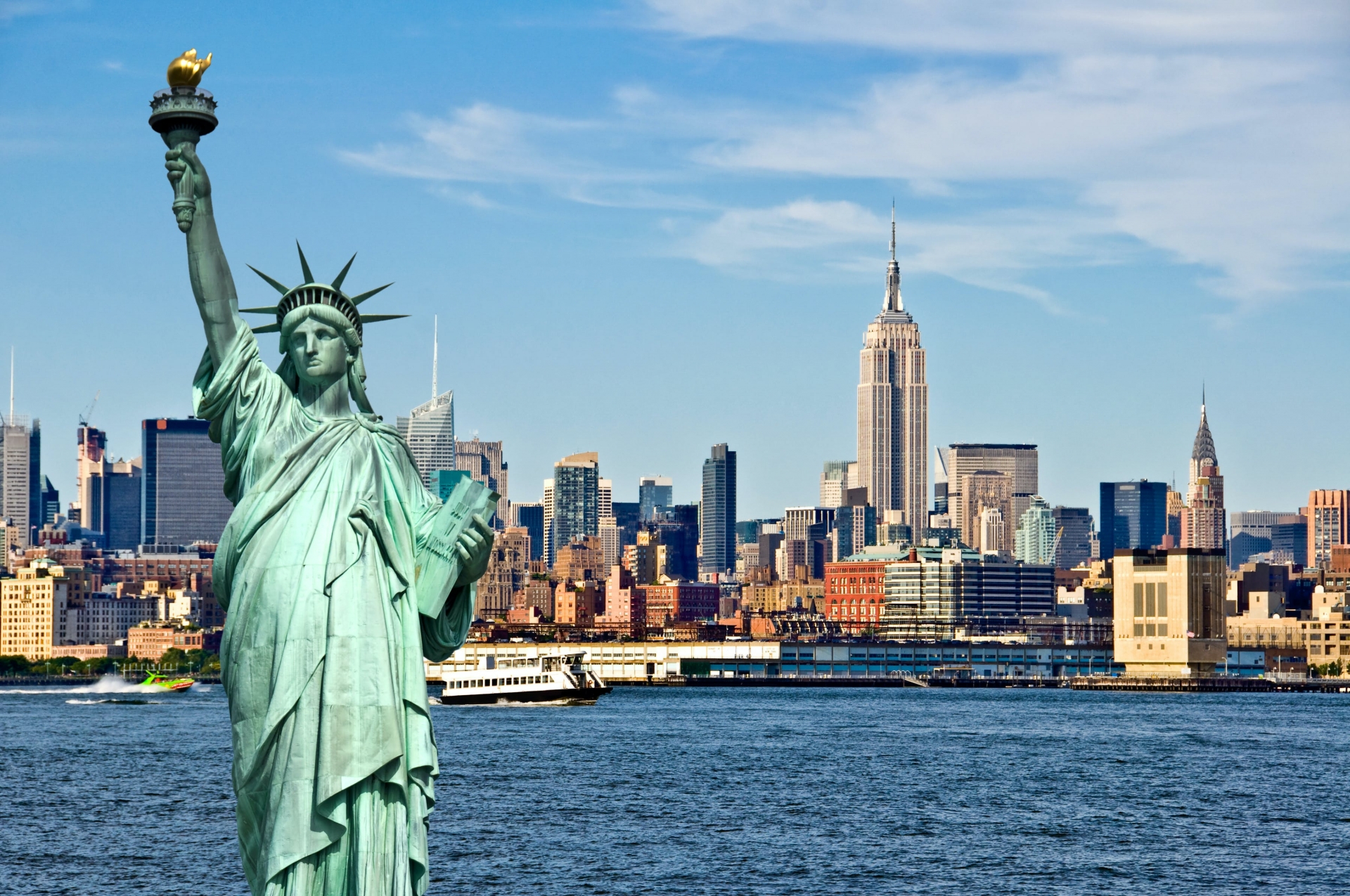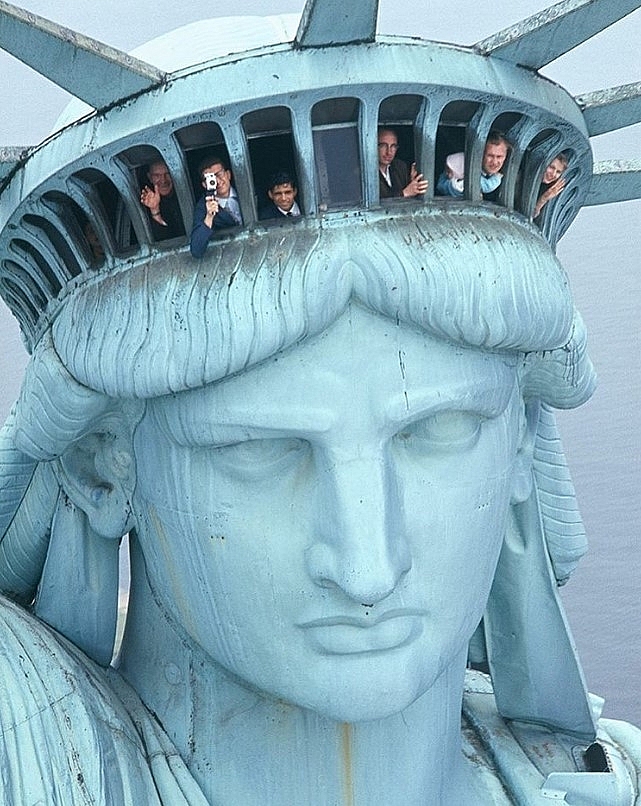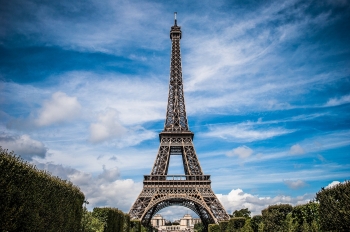Top 25 Amazing Facts About the Statue of Liberty
 |
| Top 25 Amazing Facts About the Statue of Liberty |
| Table of Content |
The History of The Statue of Liberty in Video
Standing tall and proud with a lit torch, The Statue of Liberty possesses a seasoned past while welcoming visitors to the Land of the Free.
Gifted by France to the United States in 1886, Liberty Lighting the World, commonly known as The Statue of Liberty, stands 93 meters above Upper New York Bay.
She has come to symbolize freedom and opportunity for immigrants arriving by sea seeking new opportunities and is a triumphant symbol of American identity for those at home. The grandeur of the statue may be impressive, but it is the stories behind this lady that make her so interesting. From the symbols it carries to its lighthouse function to its appearance in many movies, it had many lives.
The Statue is recognized worldwide, but did you know the following 25 facts? Scroll on to tour and learn...
Video - Most Interesting Facts About Statue of Liberty for Young People:
Physical Characteristics of the Statue of Liberty
| Feature | Measurement |
| Height of copper statue | 151 ft 1 in |
| Foundation of pedestal (ground level) to tip of torch | 305 ft 1 in |
| Heel to top of head | 111 ft 1 in |
| Height of hand | 16 ft 5 in |
| Index finger | 8 ft 1 in |
| Distance across the eye | 2 ft 6 in |
| Length of nose | 4 ft 6 in |
| Right arm length | 42 ft 0 in |
| Thickness of waist | 35 ft 0 in |
| Width of mouth | 3 ft 0 in |
| Tablet, length | 23 ft 7 in |
| Tablet, width | 13 ft 7 in |
| Tablet, thickness | 2 ft 0 in |
| Height of pedestal | 89 ft 0 in |
| Height of foundation | 65 ft 0 in |
| Weight of copper used in statue | 27.22 tonnes |
| Weight of steel used in statue | 113.4 tonnes |
| Total weight of statue | 225 tonnes |
| Thickness of copper sheeting | 2.4 mm |
So in the concluding remark it can be said that the Statue of Liberty is a very nice example of a marvelous sculpture in the world.
Top 25 Amazing Facts About the Statue of Liberty
Lady Liberty has outstanding universal value, who represents the human spirit and the friendship between French and United States Citizens. The Statue of Liberty is meant to symbolize virtuous values such as freedom, human rights, and democracy.
Standing proud at 305 feet tall, the Statue of Liberty was made using 31 tons of copper and 125 tons of steel. The copper metal sheet used to construct the statue is only 2.4 millimeters thick, which is the same thickness as two American pennies stuck together. The statue may sway if it catches winds that are traveling 50 miles an hour!
1. The Statue of Liberty's Dedicated Inspired Another New York City Tradition
 |
| Facts about the Statue of Liberty - Photo: musement |
The Statue of Liberty’s dedication inspired another uniquely New York institution: The ticker tape parade. New York office workers got the idea to unfurl financial ribbons from windows on October 29, 1886, the day President Grover Cleveland presided over the dedication ceremony.
2. The Original Model may have been an Egyptian Woman
Many historians say that the Statue of Liberty was modeled after Libertas, the Roman goddess of freedom. However, sculptor Frédéric-Auguste Bartholdi was first inspired by the colossal figures guarding Nubian tombs. He developed a lifelong passion for large-scale public monuments. In his proposal for the Suez Canal, Bartholdi designed a monumental statue of a robe-clad woman representing Egypt to stand at Port Said, at the northern end of the canal. A prototype for the statue was titled “Egypt Carrying the Light to Asia.”
The proposal was eventually scrapped due to its high cost but the designs would find a home elsewhere. The female figure in the Port Said design evolved into the goddess who would become “Liberty Enlightening the World.”
3. She Was A Gift From France
Origins date back to the 18th century when Édouard René de Laboulaye suggested erecting a monument dedicated to the unity of France and the United States. The iconic statue was designed by French sculptor Frédéric Auguste Bartholdi. He wanted to design a statue that represented "American liberty." The statue was completed in 1886, during the celebration of the slavery abolishment and the end of the American Civil War.
4. A Functioning Lighthouse
Aside from being a symbolic beacon, the Statue of Liberty was a very literal beacon for people traveling. Two years after making its official debut in the New York Harbor, the copper statue doubled as a lighthouse and would go on to continue that role for 16 years.
Nevertheless, Lady Liberty was not the best at her job and was shut off because her light was too dim for ships.
5. Americans were very slow to welcome Bartholdi’s statue
So how excited were Americans about the possibility of giving a home to this new monument? Initial fundraising and support was extremely lackluster. It took about 15 years, with the statue completed and assembled in a neighborhood of Paris, before the American citizenry finally began to embrace it.
6. She was a Trendsetter from day one
Before her dedication ceremony on October 28, 1886, Lady Liberty was inaugurated with a massive parade through Manhattan. As it passed by the Stock Exchange, jubilant day traders rained down torn up ticker tape from the upper windows. Thus began a New York tradition: the ticker tape parade.
7. The statue’s torch was exhibited in Philadelphia—and she almost ended up there
The torch was exhibited to great success at the 1876 world’s fair in Fairmount Park, Philadelphia; fairgoers paid admission to climb up into the torch and take in the view from the top. With the funds raised from that exhibit, Bartholdi finally had enough capital to build the statue’s head. He was so pleased with Philadelphia’s reception to the statue that for a time he considered giving it to them instead of New York.
8. She was a beacon of Feminism
 |
| Photo: statueofliberty |
When women were banned from attending the dedication on Bedloe’s Island that evening, suffragists chartered a boat and held their own ceremony in the nearby harbor, loudly proclaiming the hypocrisy of men “erecting a Statue of Liberty embodied as a woman in a land where no woman has political liberty.”
9. The Statue of Liberty also nearly went to Boston
In 1882, when the statue was well under construction in Paris, but fundraising efforts were stalling in New York, Boston made a play to get the statue. Proving that nothing motivates New Yorkers so well as rivalry, the New York Times retorted in an editorial:
“[Boston] proposes to take our neglected statue of Liberty and warm it over for her own use and glory. Boston has probably again overestimated her powers. This statue is dear to us, though we have never looked upon it, and no third rate town is going to step in and take it from us. Philadelphia tried to do that in 1876, and failed. Let Boston be warned . . . that she can’t have our Liberty ... that great light-house statue will be smashed into ... fragments before it shall be stuck up in Boston Harbor.”
10. Joseph Pulitzer got a little help from his friends
When funds were low to erect the pedestal for the Statue of Liberty, publisher Joseph Pulitzer began a fundraising campaign that got approximately 120,000 people to donate, many giving less than a dollar, and raised $100,000 in six months.
11. New York City's Central Park and Prospect Park were both considered as locations
When Bartholdi first arrived in New York in 1871, he considered Brooklyn’s Prospect Park and the newly constructed Central Park as possible locations for the statue. Had he chosen to build the Statue of Liberty in Central Park, the famed Dakota apartment building would not even have reached to her big toe.
12. Hollywood star: The Statue of Liberty has been featured in several modern films
The Statue of Liberty has been destroyed nearly 20 times in movies. The most famous being in the 1968 version of Planet of the Apes, in which the statue is cut in half and partially buried in the sand.
This monument can often be seen in modern popular culture such as films, postcards, commemorative photos, and as well as modern literature. The Statue of Liberty has also been featured in several comics such as the Marvel comics universe and as well as the DC comic universe.
In many films, the Statue of Liberty also makes brief cameos while other films such as Cloverfield feature the monument being destroyed. Many television and film productions have also animated the Statue of Liberty to give the monument more personality in these shows.
13. She Was Originally Brown (Not Green) - The Green Color of the Statue of Liberty is Due to Natural Weathering
Since the outer layer of the Statue of Liberty is made of pure copper, the original color of the monument was a copper brown tint. However, over time and exposure to many weather patterns, the outer layer began creating a copper carbonate called a patina.
This phenomenon occurred for 30 years after the monument’s establishment, which eventually gave the Statue of Liberty’s trademark green color.
 |
| Tourists crowd inside the crown of the Statue of Liberty. |
| The iconic green hues of the statue were unintentional when she was first unveiled in 1886 (in fact, she was a penny-like bronze). In only 5 years, she turned into a green-blue color, thanks to science! The statue is made using hundreds of copper sheets; naturally, due to the exposure of oxygen, water, and carbon dioxide over time, the copper developed oxidized layers of patina. Many travelers can agree, her iconic green hue suits her perfectly! |
14. She’s pretty thin-skinned
The Statue of Liberty is covered with a layer of copper that is very thin – about the depth of two pennies pressed together. When she was assembled on Bedloe’s Island, she was a beautiful brown color, and stayed this way for around 35 years. By 1920, the copper skin had begun to oxidize and turn the lovely sea green we know today.
Towering 879 feet atop her pedestal, Lady Liberty has a 35-foot waistline, stands 305 feet tall, and wears a size 879 shoe.
15. Thomas Edison once had plans to make the statue talk
When Edison introduced the phonograph to the public in 1878, he told the newspapers that he was designing a “monster disc” for the interior of the Statue of Liberty that would allow the statue to deliver speeches that could be heard up to the northern part of Manhattan and across the bay. Thankfully, no one pursued that strange promise, which would have led to the odd experience of walking in New York and suddenly hearing the Statue of Liberty “talking.”
16. There are 354 stairs to reach the crown balcony of the monument
For those who wish to climb up to the observation deck in the monument’s crown, there are around 20 stories worth of stairs visitors will need to climb. The staff of the monument also suggests that those who do choose to climb up these stairs be in good physical condition and health.
On average, it takes around 15 to 20 minutes to complete climbing the stairs up to the crown.
17. A spy caper made her torch unsafe for visitors to climb
 |
| Photo: grunge |
Many believe that normal wear and tear weakened the torch enough that visitors may no longer climb up to its balcony, but the real reason is an explosion in World War I. On July 30th, 1916, German spies planted explosives in a munitions depot connecting Black Tom Island with Jersey City, blowing out windows as far away as Times Square.
The statue’s arm and torch were damaged by flying debris and weren’t repaired until 1984, when the torch was replaced and covered in 24-karat gold leaf. The original torch is now on display in the pedestal lobby.
18. There is a mini version of the Statue of Liberty in France
This smaller replica of the Statue of Liberty serves as a thank you present from the United States to France for the monument and its efforts. The statue in France also faces in the direction where the Statue of Liberty faces, and vice versa.
This was also done as a symbol of the relations between the United States and France.
She Has A Little Sister!Nicknamed "Little Sister", this 9-foot, 1,000-pound statue sits in front of the home to DC's French Ambassador. This statue--which is 16th times smaller than the original--is being loaned to the Americans by France for 10 years, which signifies the relations between the two nations. The statue was shipped by vessel and was presented on Independence Day in 2021.
A small scale replica of the Statue of Liberty has just been installed in front of the French Ambassador’s residence in Kalorama, Washington DC. |
19. Suffragettes protested the unveiling of the statue
When it was unveiled in October 1886, women’s rights groups lamented that an enormous female figure would stand in New York harbor representing liberty, when most American women had no liberty to vote.
Only two women attended the actual unveiling on what is now known as Liberty Island: Bartholdi’s wife, and the 13-year-old daughter of Ferdinand de Lesseps, the French engineer who had designed the Suez Canal. The wives of the American Committee members were forced to watch the proceedings from a navy vessel off the island. Suffragettes chartered a boat to circle the island during the unveiling. They blasted protest speeches, but those could not be heard over the din of steam whistles and cannon blasts in the harbor.
20. There is a Statue of Liberty Museum in New York City
This museum can be found on Liberty Island along with the Statue of Liberty itself. Access comes free upon the purchase of a ticket for the ferry ride to the island.
Inside the museum, guests can come to see the original torch of the monument used in the early 1880s. There is also an immense theatre inside that plays a short film regarding the interiors and history of the Statue of Liberty.
21. She Sways in the Wind
Gustave Eiffel – famed for a certain iron tower which bears his name, created the statue’s unique skeleton. The iron structure at the core was the height of innovation at its time, capable of shifting in the wind without cracking or bending. Lady Liberty can sway up to three inches in any direction during heavy winds, while her torch can sway up to five inches.
22. A Handful Of People Have Called Liberty Island Home
Up until Hurricane Sandy hit in 2012, David Luchsinger and his wife were residents of a very, very exclusive neighborhood: Liberty Island. As the superintendent of the Statue of Liberty, Luchsinger is one of a select few people who have ever called the island home. The National Park Ranger selected to be the seer of the statue is provided with free housing—a small brick house, located on the other side of the island. Unfortunately, the cozy little house sustained serious damage during Hurricane Sandy and was not rebuilt, making the Luchsingers Liberty Island's last official residents.
23. Her Intricate Design Is Full Of Symbolism
While Lady Liberty herself represents freedom, her garments and accessories are also pieces of symbolism. For example, visitors will take note of the shackles that are around her feet, which represent the abolition of slavery.
Her mighty crown is a symbol of sun rays, extending to all corners of the world. Meanwhile, the tablet she's holding reads "July 4, 1776" in Roman numerals, which is the date Americans gained their independence.
24. There is a lot of symbolism on the statue
There is actually a ton of symbolism scattered across Lady Liberty. The crown on her head with its seven rays represents the seven continents and seas. The torch represents enlightenment, while the tablet in her other hand with the inscription JULY IV MDCCLXXVI is the official day of American independence.
The Statue of Liberty also faces South East, which is intentional, as a means to welcome the immigrants on ships coming to the United States.
25. Lights are shone on the Statue of Liberty during the night
It is said that the torch of the Statue of Liberty lights the path to freedom and shows us the direction to liberty. At night, powerful spotlights are shone on the Statue of Liberty to make it visible during the night as well and can be seen from afar.
This not only allows docking ships to navigate easier at the nearby port but also allows those nearby to appreciate the monument even after hours.
Replicas Are Everywhere Around The WorldHer powerful symbolism of human freedom makes The Statue of Liberty worthy of replication. Around the world, much smaller statue replicas of Lady Liberty around the world. In Canada, smaller statues depicting the original, 300-foot statue can be seen in Coquitlam, British Columbia, and Steinbach, Manitoba. Meanwhile, in Brazil, visitors can spot a replica of Lady Liberty at Rio de Janeiro's New York City Center and in Maceio, Alagoas. |
Q&A About The Statue of Liberty
What is the Statue of Liberty made of?
The Statue of Liberty is made of copper 3/32 in. (2.4 millimeters) thick, the same as two U.S. pennies put together.
Why is the Statue green?
The Statue's copper has naturally oxidized to form its familiar "patina" green coating. This patina is as thick, in many places, as the copper behind it and is protecting the copper from naturally wearing away.
How tall is the Statue of Liberty?
The Statue is 305ft. 1in. from the ground to the tip of the flame. It is the equivalent height of a 22-story building. In 1886, it was the tallest structure in New York.
Is the Statue of Liberty an image of a man or woman?
Classical images of Liberty have usually been represented by a woman. The Statue of Liberty's face is said to be modeled after the sculptor's mother.
Is the torch open?
The torch has been closed since the "Black Tom" explosion of July 30, 1916, which was one of the largest acts of sabotage to our nation prior to the event of Pearl Harbor on December 7, 1941. Many people think they've been there and confuse it with climbing a spiral staircase which goes to the crown. National Park Service staff must climb a narrow 40ft. ladder in order to maintain the floodlights which light the torch.
Is the crown open?
Yes, by reservation at www.statuecitycruises.com (UPDATE: Due to the COVID-19 pandemic, the crown is closed to the public).
Do you have questions about pedestal, monument and crown access?
The ferry company should be contacted regarding advance tickets, confirmations, monument access pass availability. You can reach them at: 877-LADY TIX for advance tickets and monument access passes or on line at: www.statuecitycruises.com
Can I purchase food or bring my own to the park?
You can do either. A food & beverage concessions are located on Liberty Island and Ellis Island or you can bring your own. (Large coolers will not be allowed through security screening) Food & Beverage Concessionaire (Evelyn Hill, Inc. - 212 363-3180).
Which direction does she face?
The Statue of Liberty faces Southeast and was strategically placed inside of Fort Wood which was a perfect base for the Statue. The Statue's position was also perfect for ships, entering the harbor, to see her as a welcoming symbol.
Does the Statue of Liberty get struck by lightning?
Yes! Although the Statue is grounded through the massive concrete and granite base she stands on; the Statue gets struck many times each year. Just how many is not known. The Statue's height and the conductive material she's made of, copper, makes it a structure of choice for lightning strikes.
What does the torch represent?
The torch is a symbol of enlightenment. The Statue of Liberty's torch lights the way to freedom showing us the path to Liberty. Even the Statue's official name represents her most important symbol "Liberty Enlightening the World". The Statue's current replacement torch, added in 1986, is a copper flame covered in 24K gold. It is reflective of the sun's rays in daytime and lighted by 16 floodlights at night. The original torch was removed in 1984 and is currently inside the Statue of Liberty Museum.
What is written on the Statue's tablet?
The tablet of law, held in the Statue's left hand, has the date of American Independence July 4, 1776, written on it in Roman numerals (July IV, MDCCLXXVI)
What do the seven spikes on the Statue's crown represent?
The rays represent a radiant halo, also called an "aureole."
Is the Statue in New York or New Jersey?
The Statue of Liberty is on Liberty Island, federal property administered by the National Park Service, located within the territorial jurisdiction of the State of New York. A pact between New York and New Jersey, ratified by Congress in 1834, declared this issue.
Can I dock my personal boat or vessel on the island?
No. Docking of private vessels is not permitted! Visitors can only arrive at the island via the contracted ferry concession service presently in place.
Are Pets Allowed In the Park?
No, pets are not permitted on the ferry system or in the park itself. Documented service/assist animals are exempt from this regulation.
If I take the ferry from one side, must I return to that side?
Yes. Ferries depart from both the State of New York and New Jersey. The side you start from is where you should return to. If not, you may be forced to find alternate ways back due to crowding or ticket office closures.
Is the Statue of Liberty on Ellis Island?
No. The park is comprised of two separate islands, Liberty Island and Ellis Island. The Statue of Liberty is on Liberty Island. Ellis Island, the former federal immigration station, is currently a national museum of immigration.
Can I use my National Park Pass when visiting this park?
No. National Park passes are valid at parks that charge an entrance fee. Tere is no entrance fee for Liberty and Ellis Islands because they are are fee exempt by law. Transportation fee (ferry) does not apply to the pass. More information or to order National Park Passes at: www.nationalparks.org
 Facts About The Oldest Restaurant In The World That You Should Visit Facts About The Oldest Restaurant In The World That You Should Visit Some of the world's oldest surviving businesses happen to be restaurants — and some date back to the 9th century. Let's explore the first restaurant ... |
 ONLY in NEW MEXICO: 7 Unique Things to Know Before Visiting ONLY in NEW MEXICO: 7 Unique Things to Know Before Visiting ONLY in NEW MEXICO: New Mexico is a pretty unique and awesome place and famous for amazingly delicious foods. However, there is something you should ... |
 12 Interesting Facts About France You May not Know 12 Interesting Facts About France You May not Know Is it true that France invented the hot air balloon? And is it really illegal to kiss on train platforms? Find out with these 12 ... |



























